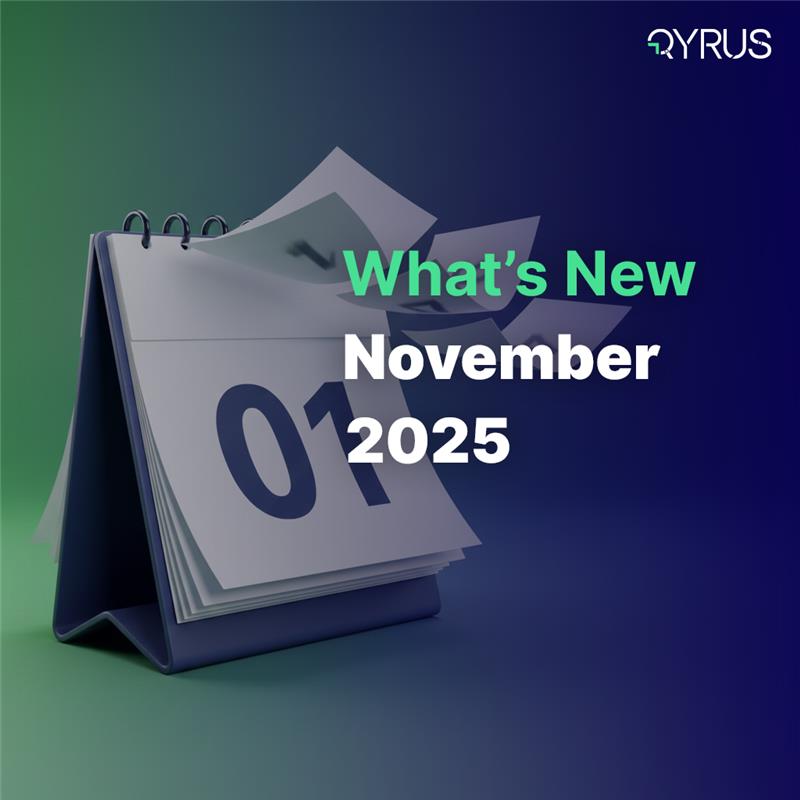Feature Friday – Rover – Learning Bot That Traverses Your Mobile App and Records Its Journey
Curiosity, opportunity, perseverance… not only are these names of a few of the legendary Mars rovers, but they are also the same aspects that kickstarted and inspired our amazing Rover AI here at Qyrus. Seeking to push the boundaries of software testing through automation, the developers here at Qyrus have coded a tool that changes how we build and execute mobile tests. We’re joined today by Dan and Amy from the Chicago Qyrus team to learn more about it and its capabilities.
Tell us more about Rover offered by Qyrus and its use cases.
Amy:
From a high level, it is a reinforcement learning bot that traverses your mobile app and records its journey. You can use these traversals to also build and export mobile test scripts on Qyrus! Overall, it’s an all-encompassing mobile app testing tool. It allows you to visually test user interfaces automatically and without the need for human interaction.
Dan:
We see some users compare test coverage on their mobile applications by comparing the traversal to their currently built test scripts to find any isolated, or not tested, portions of the application. It also gives the testers an idea of what kind of possible flows there are in their app that they may have not even been aware of. And as Amy mentioned, after a traversal you can use the flow chart it generates to build test scripts in a fast and efficient manner.
The ability to see the various user journeys that can take place can give testers and developers a deeper understanding of the mobile application. There are various ways that it can impact the testing and overall software development lifecycle (SDLC).
What is Rover’s overall impact on the testing process?
Amy:
The largest areas we see the impact in are test building and reporting. Firstly, as we have mentioned, you can build test scripts using the Rover report.However, even more important is the analysis you get back after it traverses your app. Everything comes back as a large flow, navigating from page to page in order to visualize the navigational flows users can take.
Dan:
Not only do you get that back, but you also get mobile device performance metrics back, as well. And with these benefits, we see an overall increase in test coverage as well as moderate effort reduction. And obviously, with those two areas, we can see a cost-benefit when it comes to utilizing Rover for the testing of your mobile apps.
How might this help testers, developers, and business technologists? What value can this feature bring?
Dan:
For a tester, it would help them find tests that they might have never thought of. Again, since it’s traversing your app, navigational flows may pop up that testers might not have encountered before. They’ll find use in the test builder, as well. Developers can benefit from using the performance data to see where potential improvements can be made in the app.
Amy:
Specifically for business technologists, we can see them utilizing it to keep track of the health of their apps. Since it will discover and identify broken links, incorrect navigation, and general changes to the app, it can provide a lot of insight necessary for business technologists to perform their work.
Does the same or similar functionality exist without Qyrus, and how do competitors address similar problems?
Amy:
Well, talking about competitors, they might have some similar tools, but nothing as complete and robust. Again, it can help you determine other test cases and scenarios that might have not been covered in the original test planning.
Dan:
Directly from the same screen, you can then build a test script simply by clicking through the report. It also lends a hand in UI/UX observations, since you can then see how each screen or page interacts with another. Page transitions are also included.
Amy:
And prior to this feature on Qyrus, a tester would have to manually make test scripts. This is a time-consuming process that can take up a lot of working hours and as a result resources. Also, there was no real easy way to analyze the UI/UX of a mobile app. Screenshots are captured by default on Qyrus, but not processed by Rover.
In such a short while, mobile test building and execution have come leaps and bounds in terms of efficiency and quality. From a day-to-day perspective, how might things be affected?
How do you see this impacting day-to-day operations across organizations?
Amy:
Well, it would make your day-to-day easier because of the analysis that’s given in reports. The amount of utility that is given cannot be understated. The performance metrics can give testers great insight with little to no effort on their end. Again, it’s all automated and driven by an AI.
Dan:
And instead of having to manually build test scripts day-to-day, they can use the reports, as stated before. But honestly, testers might find themselves super busy because of their ability to quickly increase the test coverage of your ecosystem.
It is a tool that can change the way your team builds, executes, and analyzes tests and mobile applications. Qyrus as a whole brings so much to the table already, and with powerful AI tools like Rover and Healer the possibility for improvement is even greater. Thanks for joining us for this Feature Friday and learning more about our impressive Rover AI. Join us next week to learn more about how performance profiling works on Qyrus.






